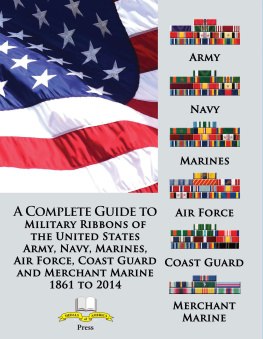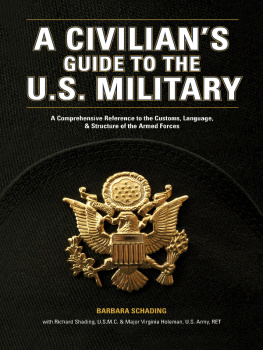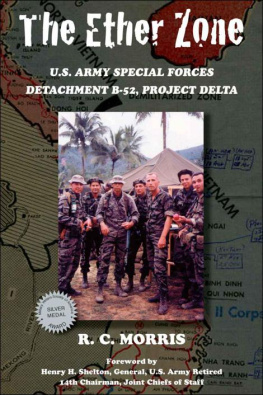All rights reserved, including without limitation the right to reproduce this ebook or any portion thereof in any form or by any means, whether electronic or mechanical, now known or hereinafter invented, without the express written permission of the publisher.
Copyright 2013 by How Stuff Works, Inc.
978-1-4804-3961-0
HowStuffWorks.com
One Capital City Plaza
3350 Peachtree Road NE, Suite 1500
Atlanta, GA 30326
www.howstuffworks.com

Published in 2013 by Open Road Integrated Media, Inc.
345 Hudson Street
New York, NY 10014
www.openroadmedia.com

GREEN BERETS, BLACKHAWKS, PURPLE HEARTS
ELITE UNITS OF THE U.S. MILITARY

INTRODUCTION
After the September 11, 2001, attacks, most U.S. citizens likely would have named Osama bin Laden as Public Enemy Number One. An entire war was launched to bring him and his terrorist organization, al-Qaeda, down and to dismantle the Taliban regime in Afghanistan, which refused to turn over the terrorists.
Then, on May 2, 2011, bin Laden was killed during a super-secret mission by a team of Navy SEALs, known as SEAL Team Six or DEVGRU, a part of the U.S. Naval Special Warfare Development Group. Their operation was led by the CIA, and involved other units, including a special division of the Army.
Since that mission, interest has blossomed in the elite forces of the military, not just the Navy SEALs, but also the military snipers, the Green Berets, the Army Rangers, and the elusive, shadowy Delta Force. These divisions of the military, made up of extremely well-trained operatives and soldiers, perform mostly covert actions that only sometimes come to light. It can be hard, therefore, to really get to know who they are and what they are up to.
Lets see if we can shed some light here
PART ONE: THE ABCs
The United States military is a vast, complicated organization split into multiple divisions that serve a variety of purposes. The five main divisions of the military are the Army, Navy, Air Force, Marines, and Coast Guard. Each one has its own character, purpose, and traits, so lets get a quick understanding of the basics before we move on to the elite elements.
THE ARMY
The army is a main branch of the U.S. military. With more than one million Americans serving in the U.S. Army, Army National Guard, and Army Reserve, and a 2012 budget of more than $200 billion, its one of the largest military organizations in the world.
The armys primary purpose is to protect the United States and its interests. This means that it fights in armed conflicts when the need arises, participates in peacekeeping and security duties, and maintains a state of readiness for war. While the army does have units that use aircraft and watercraft, its main responsibility is land-based combat.
Two main branches make up the army: the operational branch and the institutional branch. The operational branch conducts the more visible aspects of the armys job, which involve combat and peacekeeping. The institutional branch of the army is responsible for training and maintaining soldiers and equipment so the operational branch can do its job effectively.
Within the operational branch, there are two divisions:
- The regular army, also known as the active army. Its units may be deployed around the world at any given moment. Roughly 70 percent of the armys troops are in the regular army.
- Reserve components, which comprise the U.S. Army Reserve and the Army National Guard. Soldiers (the official term for anyone in the army) in the reserve typically train one weekend per month, with a two-week training period occurring once each year. These part-time soldiers may be called up to full-time whenever the army needs them. Some are divided into units made wholly from reserves, while other reserve soldiers fill out the ranks of regular army units.
Todays army is an all-volunteer force. While this generally results in high-quality soldiers (because they all actually want to be in the army), it can be difficult to get enough recruits to keep the army fully manned. In 2005, the army fell short of recruiting goals, but met its recruiting benchmarks in 2006. The United States has used conscription (mandatory military service, also known as the draft) several times in the past. Drafts were used in the War of 1812 and by both Union and Confederate forces during the American Civil War. The draft was instituted again during both World Wars, and was used during the Cold War in the late 1940s and early 1950s (the only time a peacetime draft was used). The last draft occurred in 1973, during the war in Vietnam. Since 1980, the United States has used the Selective Service System to register all males when they reach age eighteen. This system is designed to make it easier for the government to find and enlist soldiers if a draft is reinstated. However, no one has been prosecuted for failing to register since the mid-1980s.
To supplement the active army with reserves, Congress generally needs to have declared an emergency or a war, which gives the president the authority to call up those troops held in the reserves for the length of the situation plus six months. The president can also call up reserves without congressional authority for a limited amount of time. In addition, the president can activate members of the National Guard. The length of time a National Guardsman can serve in active duty overseas has increased from six months to twenty-four months because of personnel shortages caused by the war in Iraq.
Army Hierarchy
Like all military organizations, the U.S. Army follows a strict hierarchy. This establishes the chain of command through which virtually all Army orders and procedures flow. The president is the commander in chief of all U.S. armed forces. In wartime, he makes decisions based on recommendations from the secretary of defense and the joint chiefs of staff, a committee of high-ranking officials from each branch of the armed forces.
The U.S. military is also divided into nine Unified Combatant Commands (UCCs). UCCs include forces from the army as well as other military branches. Three of these commands are functional:
- United States Special Operations Command (USSOCOM)
- United States Strategic Command (USSTRATCOM)
- United States Transportation Command (USTRANSCOM)
The remaining six commands are large geographic regions that encompass the entire globe. Each regional UCC is led by a general and manned by a numbered field army. For example, the UCC responsible for North America, the United States Northern Command (USNORTHCOM), is manned by the Fifth Army. The rest of the regional commands include:
- United States Central Command (USCENTCOM)
- United States European Command (USEUCOM)
- United States Pacific Command (USPACOM)
- United States Southern Command (USSOUTHCOM)
- United States Africa Command (USAFRICOM)
Within each field army there are several corps; the corps themselves are made up of divisions. Formerly, the divisions were the building blocks of most army deployments. When troops were needed somewhere in the world, the army would send one or more divisions to do the job. However, a division is made up of more than ten thousand troops (including support personnel), and many situations faced by the modern army dont require that many soldiers.














